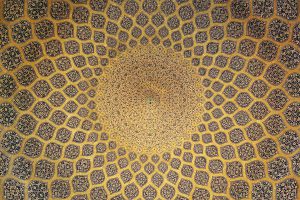Defining the Nomenclature “Musnad” in Ḥadīth Terminology
By Mln. Saad Hussain (Takmil Graduate, 2019)
When perusing the ḥadīth corpus, one will eventually come across various terminology. It is imperative that one grasp the nuanced meanings that are associated with the terms used. This brief writing is meant to elucidate a specific term: Musnad. Definitions of this term will be presented along with noting the different approaches of the ḥadīth scholars in defining it.
I will present three definitions along with expounding the inclinations that the latter-day authorities in the subject held to preferring one of them over the others.
Firstly, there is the definition that is offered by Ibn ʿAbd al-Barr. He said:
وأما المسند فهو ما رفع إلى النبي صلى الله عليه وسلم خاصة
“Regarding the Musnad, it is specifically that which is ascribed to the Prophet (upon him be peace).”[1]
Then, Abū Bakr al-Khaṭīb al-Baghdādī defined it too. His definition is slightly different than that of Ibn ʿAbd al-Barr. He said:
وصفهم للحديث بأنه مسند يريدون أن إسناده متصل بين راويه وبين من أسند عنه إلا أن أكثر استعمالهم هذه العبارة هو فيما أسند عن النبي صلى الله عليه وسلم خاصة
“They [the scholars of ḥadīth] described the hadith as being ‘Musnad’ intending that the ḥadīth’s chain is connected between its narrators and the source. However, most of the time they use this particular term specifically for what is sourced to the Prophet (upon him be peace).”[2]
The third definition was suggested by Ḥākim al-Naysābūrī. He said:
والمسند من الحديث أن يرويه المحدث عن شيخ يظهر سماعه لسن يحتمله وكذلك سماع شيخه من شيخه إلى أن يصل الإسناد إلى صحابي مشهور إلى رسول الله صلى الله عليه وسلم
“The Musnad is that hadith which the authority narrates from a scholar whom he heard from, and likewise that scholar from the authority whom he heard from, until the chain reaches a known companion and the Prophet (upon him be peace).”[3]
Ibn al-Ṣalāḥ related these three definitions.[4] And he inclined to preferring Ḥākim’s. Dhahabī also preferred it.[5] Likewise, Ḥāfiẓ Ibn Ḥajar preferred it. And he noted that this definition has two main components: (1) the fact of having a fully connected chain, with no interruptions and (2) in going back to the source, it reaches the Prophet (upon him be peace).[6]
In this way, the definition differs with that of Khaṭīb al-Baghdādī as his definition is primarily qualified by the consideration that the chain is fully intact. As well, it differs with that of Ibn ʿAbd al-Barr who qualified it by being that which is sourced to the Prophet (upon him be peace).
Sakhāwī preferred Ḥākim’s definition and related it from his teacher Ḥāfiẓ Ibn Ḥajar.[7] And Suyūṭī, who also preferred it, added that there is, according to Ḥākim, a qualification that should be noted. He said that wordings of transmission, like “ukhbirtu” and “balaghanī ʿan fulān” should not be found in the chain.[8]
Shaykh Muḥammad ʿAwwāmah advised that one must be well acquainted with discussions like this that define the technicalities and nuanced differences in ḥadīth terminology. It is necessary for one studying ḥadīth to know the terminology that is unique to the ḥadīth scholars. Thus, when one reviews their books and studies their opinions, he will understand what they intend by the terms used. Consequently, he will not mix up the terms of some and impose them unto others. This point needs to be noted and observed when reviewing the statements and terms used by the scholars in the subject of ḥadīth nomenclature and when they consider the reliability of narrators.[9]
[1] Tamhīd, 1:21. Sakhawi mentioned that this is also the opinion of Ibn Abī Ḥātim, Abū Ḥātim al-Rāzī, and Dāraquṭnī. (Fatḥ al-Mughīth, 1:181-184)
[2] al-Kifāyah fī ʿIlm al-Riwāyah, 21. ʿAbd al-Ḥayy al-Laknawī related this view from Ibn al-Ṣabbāgh’s ʿUddah too. (Ẓafar al-Amānī, 207)
[3] Maʿrifat ʿUlūm al-Ḥadīth, 17.
[4] Muqaddimah, 42-43.
[5] Mūqiẓah, 43.
[6] Nuzhat al-Naẓar, 440; Nukat 1:21.
[7] Fatḥ al-Mughīth, 1:181-184.
[8] Tadrīb al-Rāwī, 2:92.
[9] Taḥqīq ʿAwwāmah ʿalā Tadrīb al-Rāwī, 3:91.


